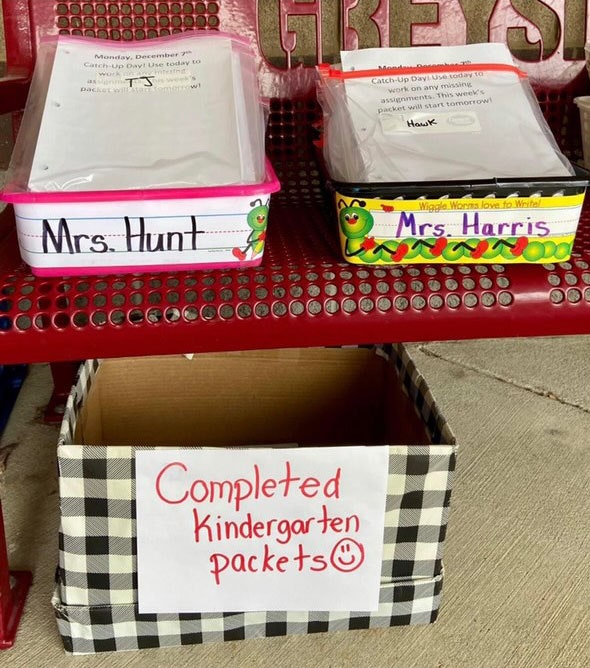Help is on the way for more than 300 Greenup County School District students left out of remote learning
Record failure rates attributed to lack of internet access and student engagement during pandemic closures

Greenup, Kentucky (March 5, 2021) – When the pandemic forced the Greenup County School District to shut down, faculty and staff struggled to reach their students.
“Much of our population is rural, and there are high poverty levels across the county with approximately 62% of students qualifying for free and reduced lunch,” said Sarah Kelsey, Instructional Coordinator, Greenup County School District. “Even before the pandemic, we had some parents let us know their children would not be able to do virtual homework because they didn’t have internet access at home. A student internet home access survey conducted in early March 2020 showed that 25.1% of our students did not have reliable access to internet services.”
Faculty tried printing paper instructional packets for students shortly after the pandemic began, but many families were not able to pick them up and return them in a way that yielded positive two-way communication on homework and student progress. In many cases, there wasn’t even a way to reach families by phone.

As a result, the schools were spending a lot of money on student packets, and Kelsey adds, if they did get them, the kids were missing out on important instruction.
“Paper packets are not as engaging and impactful as in-person instruction,” she said. “The teachers can do a lot of specialized online instruction that these students need and should be getting. I have two children in elementary school and they’ve only had approximately 30 days of in-person instruction over the course of the past year, so one can only imagine just how far behind those students who do not have internet access are from those who do.”
The situation has become so dire that the school district was forced to send out approximately 300 failure notices for the 2021 school year—that was just for the virtual academy.
“We also have more than 300 high school students who require grade recovery (that is, they’ve failed one or more courses) in both virtual and in-person class settings. In comparison with previous years, those numbers are exponentially higher,” added Kelsey.
Faculty and administration were so frustrated that they jokingly kicked around the idea of putting a hotspot in a backpack and sending it into the community. That’s when Kelsey learned about the AT&T K-12 homework gap program, which is providing free wireless internet access and mobile Wi-Fi hotspots to 35,000 at-risk K-12 students across the country.
“When I heard about the program, it was just a week before the application deadline,” she said. “So, I reached out to our principals, who maintain tight-knit relationships with the community, and I asked them which of their students need internet access now.”

In all, the Greenup County School District was awarded mobile hotspots and data plans to connect 314 students. Connected Nation, a national nonprofit working toward expanding broadband (high-speed internet) access, adoption, and use to all families, is administering the program—which was made possible by a $10 million funding commitment from AT&T.
“The Greenup County School District is providing critical services and support to K-12 students who are struggling,” said Brent Legg, Executive Vice President of Government Affairs, Connected Nation (CN). “The district had recently purchased Chromebooks for every student, so we saw internet access as the last remaining puzzle piece that could immediately help the staff reach their most in-need students and begin the long process of re-engaging them and repairing the damage the pandemic has done.”

Kelsey says the hotspots will be needed even after regular in-person instruction returns—to both allow students to participate in summer programs and to help those who have fallen behind.
“We have a credit recovery program that’s online. It’s called ‘Edgenuity,’ and it is individually tailored to each student to help them finish or retake a course,” she said. “We also will have the virtual academy that will now continue through the summer because we do have a lot of students who are so far behind at this point. The K-12 homework gap program is so necessary because we’re not the only ones trying to find ways to reach our students during this unprecedented time. So many districts across the country are struggling with the same issues.”
In total, there are 124 school district and nonprofit awardees spanning 26 states that have been named—representing 81 school districts and 43 nonprofits that serve at-risk youth.
To learn more about the AT&T K-12 homework gap program and the awardees, head to connectednation.org/homeworkgap.
Learn more about the Greenup County School District by visiting their website: https://www.greenup.k12.ky.us/.






